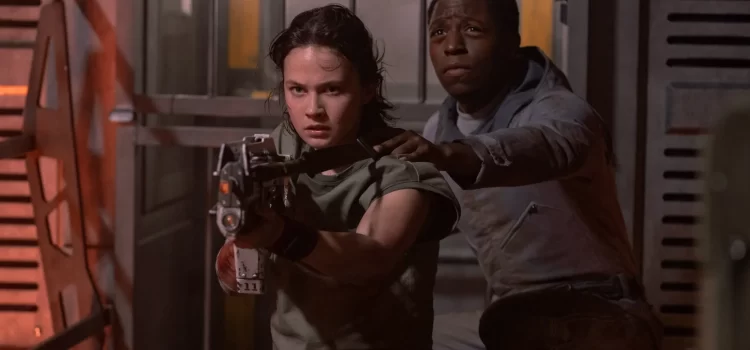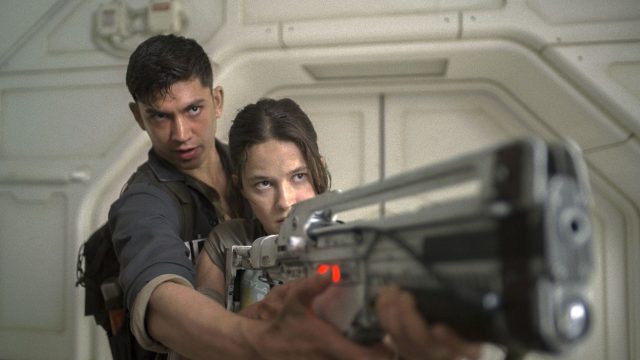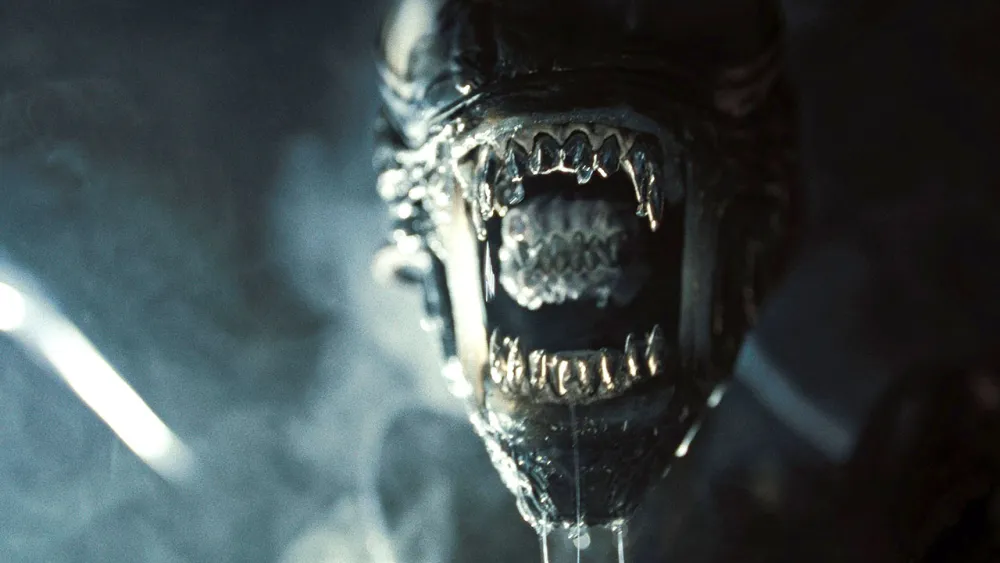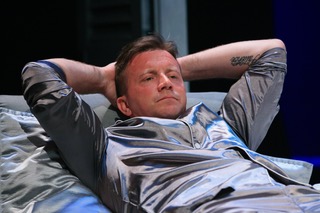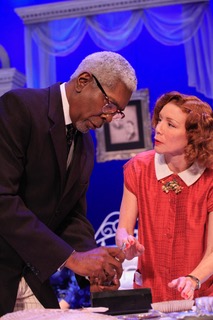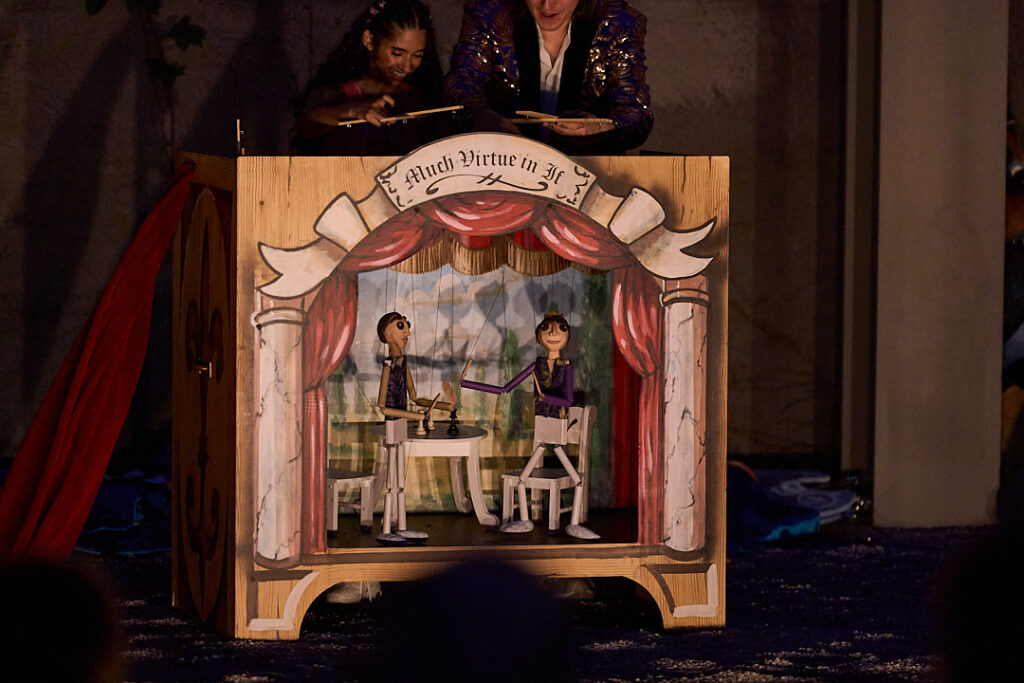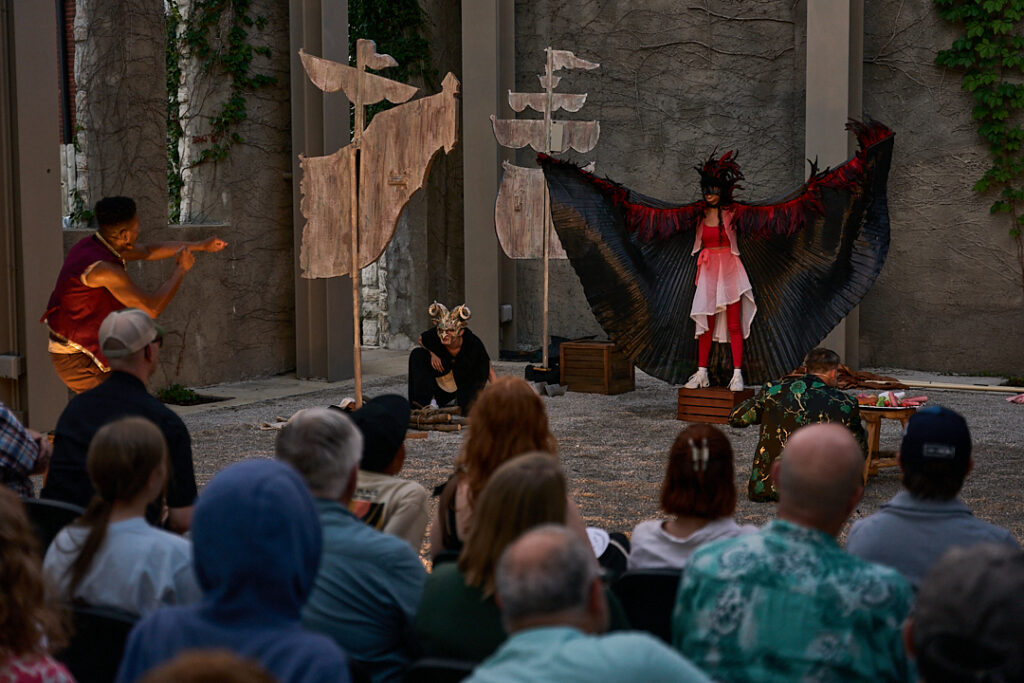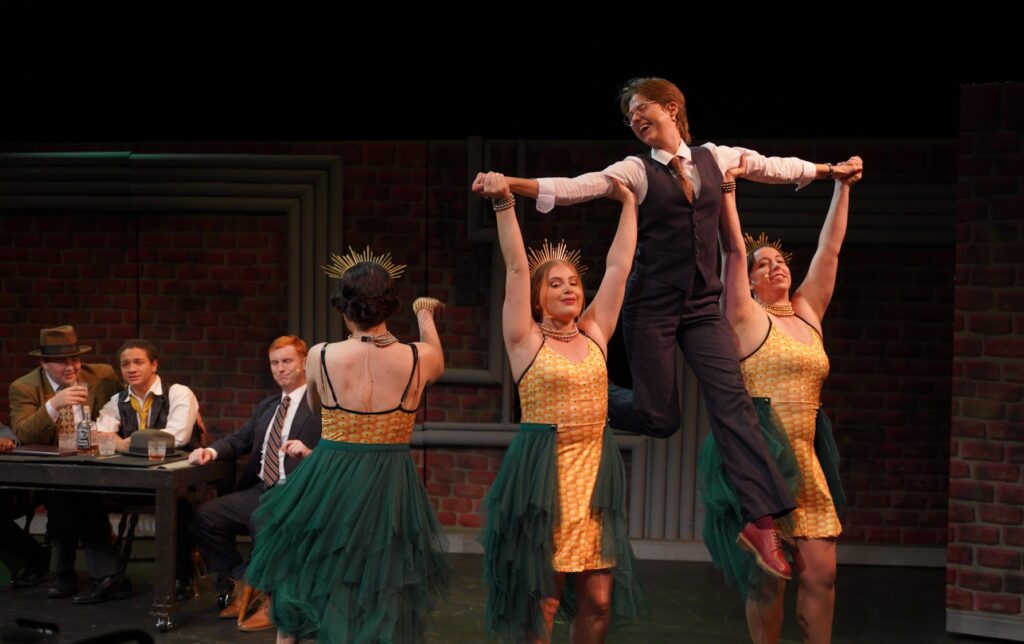By Lynn Venhaus
When you see actor Eric Dean White’s name in a cast, you know that he will deliver an authentic performance. His latest role as Gooper, the resentful and ruthless son of Big Daddy, who schemes to control his family’s fortune, in “Cat on a Hot Tin Roof,” is a fine example of his commitment to a character.
Displaying a big chip on his shoulder because his handsome and athletic brother Brick was favored by his parents, White is smooth and shrewd in the supporting role.
This delectable story of big drama, big money and big lies, presented by the Tennessee Williams Festival St. Louis Aug. 8 – 18, is a Southern Gothic excursion into an American dysfunctional family, 1950s style, that won a Pulitzer Prize for Drama in 1955, and Williams considered it his favorite.

White is thrilled to be in this ensemble.
“Simply put, ‘Cat’ is one of the greatest American plays by one of the greatest American playwrights, and it’s just an honor to be part of it,” White said. “We have a fantastic cast, and we are being led by director Michael Wilson, who is a renowned Tennessee Williams expert…It has been an honor and a pleasure to work with this team.”
White’s love for the material is evident, and he has previously been part of the Tennessee Williams Festival St. Louis, from its first year, performing in “The Rooming House Plays” in 2016, and in “Small Craft Warnings” in 2017.

Throughout his career, he has moved easily between hero and villain roles, showing his versatility, and becoming a reliable fixture of the professional regional theater community. He is a member of Actors’ Equity Association and SAG-AFTRA.
Relishing a unique opportunity to play the most evil villain of them all, he won a St. Louis Theater Circle Award as an arrogant calculating Satan in “The Last Days of Judas Iscariot,” presented by Mustard Seed Theatre in 2018.
He has been nominated four other times, his first nod for playing Felix Turner, the doomed New York Times fashion reporter and activist Ned Weeks’ lover who succumbs to AIDS, in “The Normal Heart” at HotCity Theatre in 2014, which also won the award for outstanding production of a drama.
His other nominations show his impressive range. Earning three nominations in a row, he played a brash guy whose encounter with a stranger on a walk leads to more conversations in “The Kiss” at Upstream Theatre in 2015; Daisy’s exasperated son Boolie in “Driving Miss Daisy” at the New Jewish Theatre in 2016; and recognized as a conflicted fundamentalist Christian minister in the puppet comedy “Hand to God” at St. Louis Actors’ Studio in 2022.

Earlier this year, he stood out in dual roles in The Black Repertory Theatre’s “Hold On!” as hot-headed intolerant bigots Alabama Gov. George Wallace and Dallas County Sheriff Jim Clark. The play was about the landmark Voting Rights Act of 1965 after the Selma to Montgomery March organized by civil rights activists.
He has played a cruel racist before, as impresario Stephen Price in “The African Company Presents Richard III” at the Black Rep in 2022, and as a Hitler apologist in Neil LaBute’s one-act “The Fourth Reich” that was presented in 2018 during the LaBute New Theater Festival and off-Broadway in January 2019. (He’s been a frequent contributor in the LaBute Festival).
His work in “Hold On!” was in January, soon after delighting audiences as a seasoned radio announcer in The Repertory Theatre’s triumphant comeback “It’s a Wonderful Life! – A Live Radio Play” in December.
With his mellifluous voice, he played Freddie Filmore and amusingly delivered commercials for Schnucks, Crown Candy Kitchen, Ted Drewes, and other St. Louis notables.

This fall, he returns to The Rep in their season opener, the classic mystery “Dial M for Murder.” He will play the eccentric but thorough Inspector Hubbard. In announcing the cast, they described him as a “Rep favorite.”
The play, to be directed by Melissa Rain Anderson, who deftly helmed “The Play That Goes Wrong” in 2019, will run Sept. 18 – Oct. 13 at the Loretto-Hilton Center on the campus of Webster University.
He joins the cast that includes Jenelle Chu as Margot, Jordan Coughtry as her former tennis pro husband Tony, Jayson Heil as their friend Max, Ethan Dunne Stewart as police officer Thompson and David Diaz Weynand as Lesgate, Tony’s old schoolmate.
Frederick Knott’s play, which inspired Alfred Hitchcock’s 1954 cinematic thriller, combines passion, blackmail and revenge into an edge-of-your-seat murder mystery when a gold-digging husband’s perfect crime misfires, trapping all parties in a sinister and dangerous web of lies.
He is home on The Rep’s mainstage, for he appeared as the Ghost of Christmas Future in “A Christmas Carol” and as Mrs. Bennett’s brother Mr. Gardiner in “Pride and Prejudice.”

He has also performed in other regional theaters around the country, including Houston and Arkansas. He appeared on an episode of “Chicago Fire” in 2015, and has acted in locally shot films, including “Finch,” “Penitentia,” “Cringe” and “Belleville.”
For White, keeping busy in an industry in flux is gratifying. When he’s not working on stage or off, he’s husband to Wendy and dad to daughters Payton and Cassidy.
Take Ten Q & A with Eric Dean White
1.Why did you choose your profession/pursue the arts?
“That’s a very good question and I ask myself that all the time. It’s almost absurd in a way how difficult it is to work professionally in any form of the arts. The rejection and inconsistency of work takes its toll on you. But the simple fact is I love it and maybe more importantly, I’m fascinated by it. Plus, people keep hiring me, so I keep saying yes!”

2. How would your friends describe you?
“Eric Dean White? Never heard of him.”
3. How do you like to spend your spare time?
“What is this “spare time” you speak of?”
4. What is your current obsession?
(This was asked before it concluded). “The 2024 Summer Olympics in Paris! Specifically, men’s and women’s soccer and women’s gymnastics.”
5. What would people be surprised to find out about you?
“I’m extremely sensitive to — and irritated by — certain sounds and noises. Often to the point that I have to leave the room.”
6. Can you share one of your most defining moments in life?
“Meeting Wendy.”

7. Who do you admire most?
“I’m hesitant to place too much admiration on individual people. I’m very moved by acts of selflessness and grace — especially when no one is watching.”
8. What is at the top of your bucket list?
“I’d like to travel more in the coming years. Haven’t been able to do much of that as of late.”
9. How were you affected by the pandemic years, and anything you would like to share about what got you through and any lesson learned during the isolation periods? Any reflections on how the arts were affected? And what it means to move forward?
“The pandemic was terrible for the live arts. There is no way to sugar coat it. I’m not sure if we will ever get back to where we were before the pandemic. There is very little interest in public funding of the arts via state and federal governments and corporate funding has also dried up. I don’t know what the path forward is. There are arts leaders much smarter than me doing all they can to try and figure out a path forward. I wish them luck. I encourage individuals to buy tickets to see live theatre and other performances.”
10. What is your favorite thing to do in St. Louis?
“I love going to Cardinals, St. Louis City SC and Blues games. I love going to all of our parks and museums. I love all the various art, food and cultural festivals we have. Oh – and St. Louis has a fantastic theatre and music scene!”

More About Eric Dean White:
Age: 49
Birthplace: Sikeston, Missouri
Current location: St. Louis (City),
Family: One wife, two daughters, one pit bull

Education: Studied marketing at the University of Missouri and acting at The American Academy of Dramatic Arts (New York City campus)
Day job: Visitor and Member Services at the Saint Louis Art Museum
First play or movie you were involved in or made: I didn’t do any acting of any kind until I was about 24 years old. I think my first was a production of the play “June Moon” by George S. Kaufman and Ring Lardner during my first year at The American Academy of Dramatic Arts in New York.
Favorite jobs/roles/plays or work in your medium? I’m just lucky to keep getting cast. That’s all that matters.
Favorite quote/words to live by: “Did it ever occur to you that no one ever asked us to do this?” – Jack O’Brien at the 2024 Tony Awards.
A song that makes you happy: First one that came to mind was Eddie Vedder’s cover of “Save It for Later” that was recently featured in season 3 of “The Bear” (episode 2). Also check out the original version of the song by The English Beat – great as well!

Cover photo with Kari Ely in “Cat on a Hot Tin Roof” by Suzy Gorman.

Lynn (Zipfel) Venhaus has had a continuous byline in St. Louis metro region publications since 1978. She writes features and news for Belleville News-Democrat and contributes to St. Louis magazine and other publications.
She is a Rotten Tomatoes-approved film critic, currently reviews films for Webster-Kirkwood Times and KTRS Radio, covers entertainment for PopLifeSTL.com and co-hosts podcast PopLifeSTL.com…Presents.
She is a member of Critics Choice Association, where she serves on the women’s and marketing committees; Alliance of Women Film Journalists; and on the board of the St. Louis Film Critics Association. She is a founding and board member of the St. Louis Theater Circle.
She is retired from teaching journalism/media as an adjunct college instructor.







